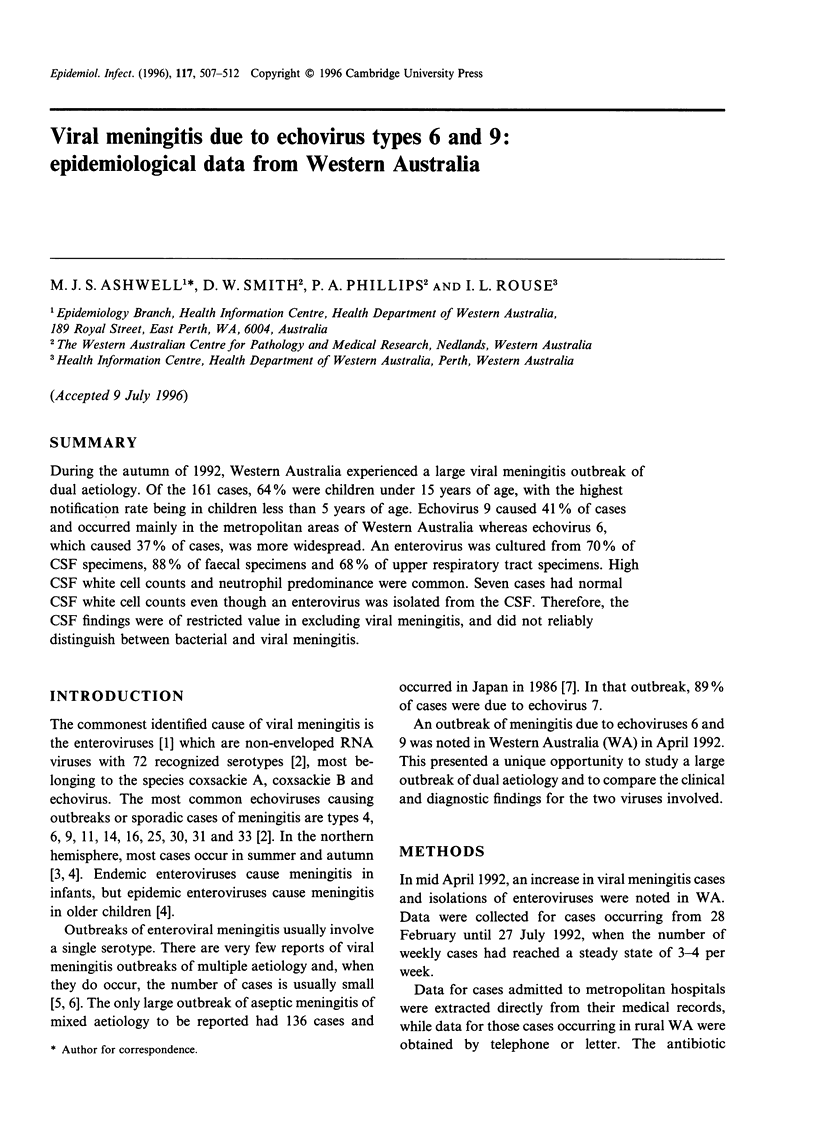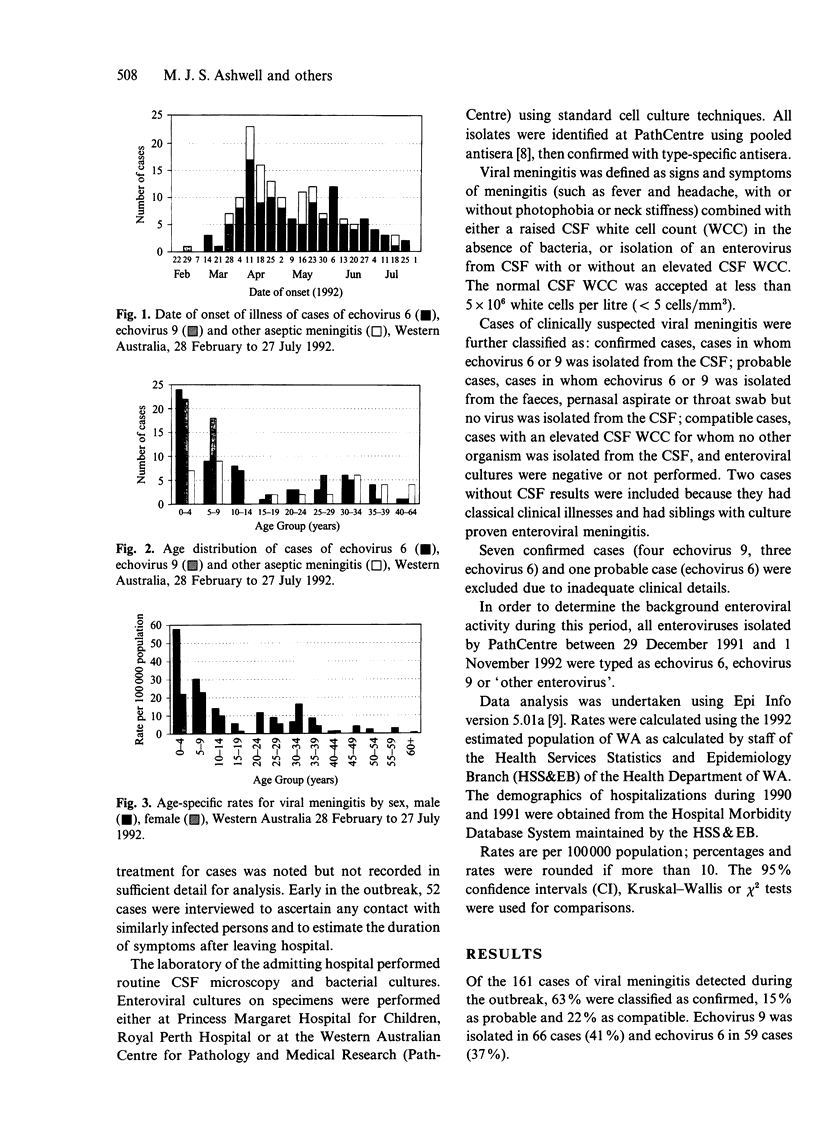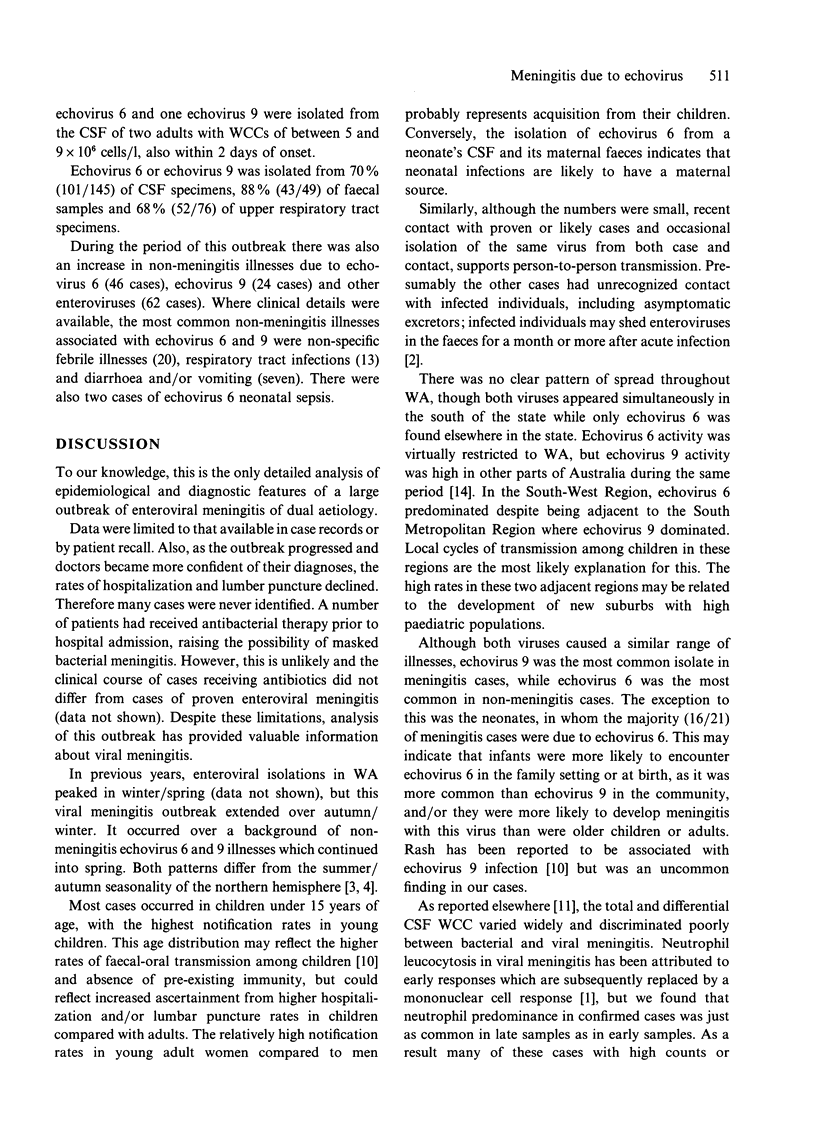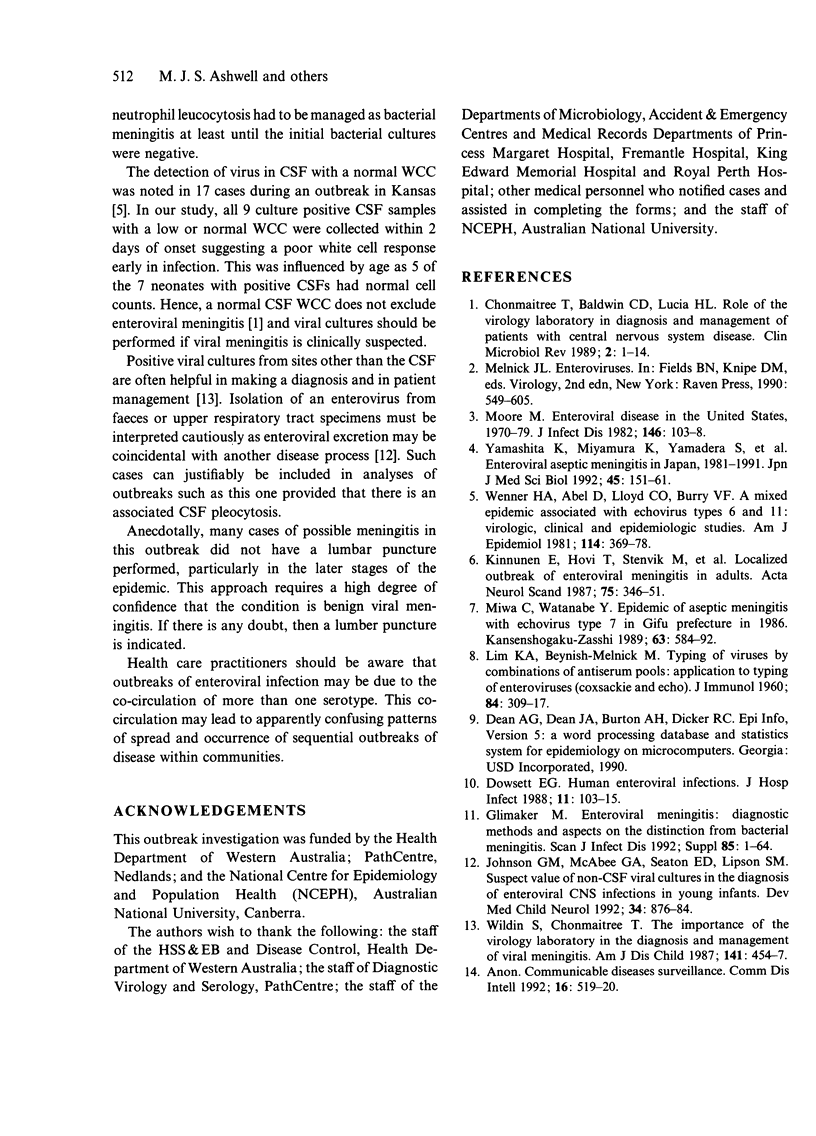Abstract
During the autumn of 1992, Western Australia experienced a large viral meningitis outbreak of dual aetiology. Of the 161 cases, 64% were children under 15 years of age, with the highest notification rate being in children less than 5 years of age. Echovirus 9 caused 41% of cases and occurred mainly in the metropolitan areas of Western Australia whereas echovirus 6, which caused 37% of cases, was more widespread. An enterovirus was cultured from 70% of CSF specimens, 88% of faecal specimens and 68% of upper respiratory tract specimens. High CSF white cell counts and neutrophil predominance were common. Seven cases had normal CSF white cell counts even though an enterovirus was isolated from the CSF. Therefore, the CSF findings were of restricted value in excluding viral meningitis, and did not reliably distinguish between bacterial and viral meningitis.
Full text
PDF





Selected References
These references are in PubMed. This may not be the complete list of references from this article.
- Chonmaitree T., Baldwin C. D., Lucia H. L. Role of the virology laboratory in diagnosis and management of patients with central nervous system disease. Clin Microbiol Rev. 1989 Jan;2(1):1–14. doi: 10.1128/cmr.2.1.1. [DOI] [PMC free article] [PubMed] [Google Scholar]
- Dowsett E. G. Human enteroviral infections. J Hosp Infect. 1988 Feb;11(2):103–115. doi: 10.1016/0195-6701(88)90051-5. [DOI] [PubMed] [Google Scholar]
- Glimåker M. Enteroviral meningitis. Diagnostic methods and aspects on the distinction from bacterial meningitis. Scand J Infect Dis Suppl. 1992;85:1–64. doi: 10.3109/inf.1992.24.suppl-85.01. [DOI] [PubMed] [Google Scholar]
- Johnson G. M., McAbee G. A., Seaton E. D., Lipson S. M. Suspect value of non-CSF viral cultures in the diagnosis of enteroviral CNS infection in young infants. Dev Med Child Neurol. 1992 Oct;34(10):876–884. doi: 10.1111/j.1469-8749.1992.tb11385.x. [DOI] [PubMed] [Google Scholar]
- Kinnunen E., Hovi T., Stenvik M., Hellström O., Porras J., Kleemola M., Kantanen M. L. Localized outbreak of enteroviral meningitis in adults. Acta Neurol Scand. 1987 May;75(5):346–351. doi: 10.1111/j.1600-0404.1987.tb05457.x. [DOI] [PubMed] [Google Scholar]
- LIM K. A., BENYESH-MELNICK M. Typing of viruses by combinations of antiserum pools. Application to typing of enteroviruses (Coxsackie and ECHO). J Immunol. 1960 Mar;84:309–317. [PubMed] [Google Scholar]
- Miwa C., Watanabe Y. [Epidemic of aseptic meningitis with echovirus type 7 in Gifu prefecture in 1986]. Kansenshogaku Zasshi. 1989 Jun;63(6):584–592. doi: 10.11150/kansenshogakuzasshi1970.63.584. [DOI] [PubMed] [Google Scholar]
- Moore M. Centers for Disease Control. Enteroviral disease in the United States, 1970-1979. J Infect Dis. 1982 Jul;146(1):103–108. doi: 10.1093/infdis/146.1.103. [DOI] [PubMed] [Google Scholar]
- Wenner H. A., Abel D., Olson L. C., Burry V. F. A mixed epidemic associated with echovirus types 6 and 11: virologic, clinical and epidemiologic studies. Am J Epidemiol. 1981 Sep;114(3):369–378. doi: 10.1093/oxfordjournals.aje.a113204. [DOI] [PubMed] [Google Scholar]
- Wildin S., Chonmaitree T. The importance of the virology laboratory in the diagnosis and management of viral meningitis. Am J Dis Child. 1987 Apr;141(4):454–457. doi: 10.1001/archpedi.1987.04460040112030. [DOI] [PubMed] [Google Scholar]
- Yamashita K., Miyamura K., Yamadera S., Kato N., Akatsuka M., Inouye S., Yamazaki S. Enteroviral aseptic meningitis in Japan, 1981-1991. A report of the National Epidemiological Surveillance of Infectious Agents in Japan. Jpn J Med Sci Biol. 1992 Jun;45(3):151–161. doi: 10.7883/yoken1952.45.151. [DOI] [PubMed] [Google Scholar]


